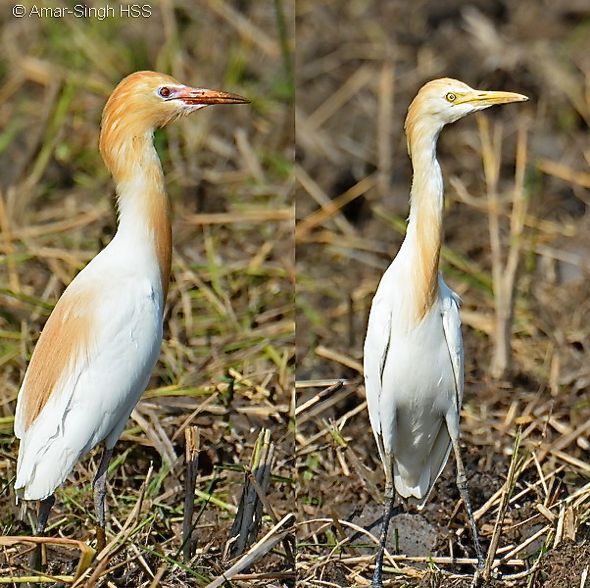“With the padi fields being cut or ploughed, egrets, herons, raptors, swifts, swallows and others had turned up in large numbers to feed on rodents or insects. I understand from the farmers that rats in the fields are poisoned and one farmer said this could account for the reduction of raptors they have noticed. I am uncertain of the nature of the poison and if it can affect the raptors and other birds feeding on the rats.
“This particular Cattle Egret (Bubulcus ibis coromandus) benefited from my presence (above). As they are intensely competing for rats, there is much harassment and attempt to steal prey. As such observations can be done at close range. One
Cattle Egret that got a rat was startled by my presence and camera and dropped the prey. Another took the opportunity to get the prey and flew off.
“Almost all Cattle Egrets here were in breeding plumage, some in peak condition (above, bird on the left).”
Dato’ Dr Amar-Singh HSS
Ipoh, Perak, Malaysia
2nd February 2013
Location: Ulu Dedap, Perak, Malaysia
Habitat: Extensive rice farming area, wetlands with nearby rivers











One Response
Can’t the farmers just let the birds help them control the rat population, rather than poisoning the rats? Poison is never ever a good option. It affects the entire food chain and has adverse effects on the ecosystem.